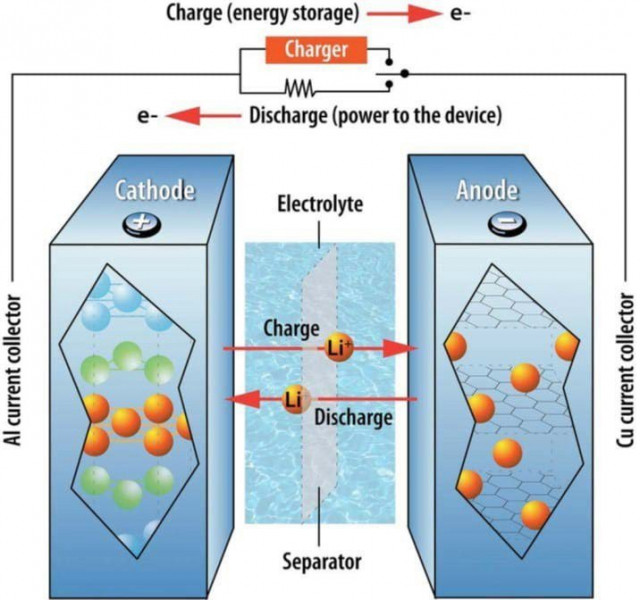In major breakthrough scientists at the Department of Energy's SLAC National Accelerator Laboratory and Stanford University have successfully made the first high-res images of solid-electrolyte interphase or SEI -- a squishy layer key to better performance in batteries -- using cryogenic electron microscopy (cryo-EM).
Lithium metal batteries have the ability to store much more charge in a given space than Li-ion batteries however one of the challenges is the liquid (electrolyte) between battery electrodes that corrodes the surface of the lithium metal anode, coating it in a thin layer of a sticky substance called the solid-electrolyte interphase, or SEI.
The cryo-EM snapshots of SEI, for the first time ever, have shown SEI's natural swollen state in a working battery and offers a new approach to lithium metal battery design.
"There are no other technologies that can look at this interface between the electrode and the electrolyte with such high resolution," said Zewen Zhang, a Stanford Ph.D. student who led the experiments with SLAC and Stanford professors Yi Cui and Wah Chiu. "We wanted to prove that we could image the interface at these previously inaccessible scales and see the pristine, native state of these materials as they are in batteries," Zhang added.
While scientists have maintained that the formation of SEI is inevitable, researchers have long worked on controlling and stabilizing the growth of this layer in a way that helps to maximize the battery performance.
"We find this swelling is almost universal. Its effects have not been widely appreciated by the battery research community before, but we found that it has a significant impact on battery performance," said, Professor Yi Cui.
The results from the latest study are significant as they reveal that the right electrolyte can minimize the swelling and improve the battery's performance – opening doors for scientists to develop and improve battery design in newer ways.
Further, some scientists have also pointed how the revolutionary technology of cryo-EM, which was developed as a tool for biology, opens "thrilling opportunities" in energy research.
Related Read:
1. Researchers at SLAC and Stanford University revive batteries by restoring "dead" lithium
Read More

